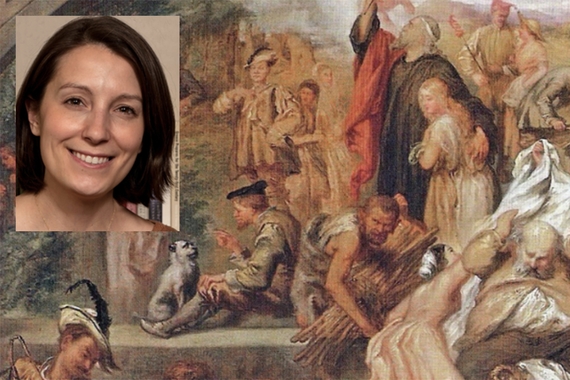Video: Faculty Discuss Toni Morrison novel
Assistant Professors of English Megan Finch (right, above) and Rachel Trocchio (left) are both teaching Toni Morrison's 2008 novel A Mercy this semester: Finch in "African American Literature and Culture II" and Trocchio in "American Literatures and Cultures I." What if, they thought, we bring the classes together to show how two scholars read a book—and even a passage—from different perspectives? Morrison's novel portrays the lives of characters in early America, including an enslaved girl, a Native American servant, an Anglo-Dutch farmer and his immigrant wife. Finch focuses on 20th- and 21st-century African American and American literature, Trocchio on writing from colonial America, particularly Puritan theology and intellectual history. The aim of their cross-class collaboration, says Trocchio, is in part to encourage "a sense of how capacious English can be as a discipline."
The professors asked the students to meet in small groups to discuss an excerpt from the novel through the differing lenses of their courses—and to record their online conversations. To illustrate the exercise, Finch and Trocchio offered a recording of themselves discussing A Mercy's opening passage. As they show in the video, even a word—"confession"—can resonate in different, non-exclusionary ways according to different scholarly frameworks and perspectives. Finch talks about Morrison's deliberate use of the word within the context of historial slave narrative "confessions" written by and to white people and neo-slave novels of the 20th century. Trocchio situates "confession" with the language and practice of New England church membership and witchcraft at Salem. Both point out how the categories or genres of "novel" and "race" were emerging and hardening in the 1600s and 1700s, the period of Morrison's novel.


